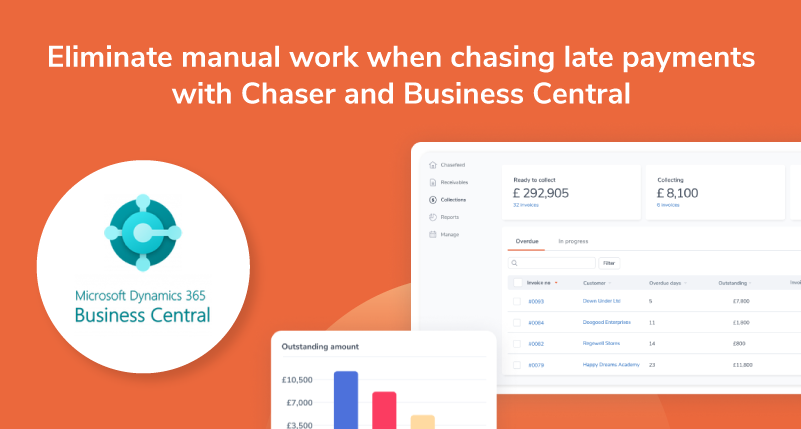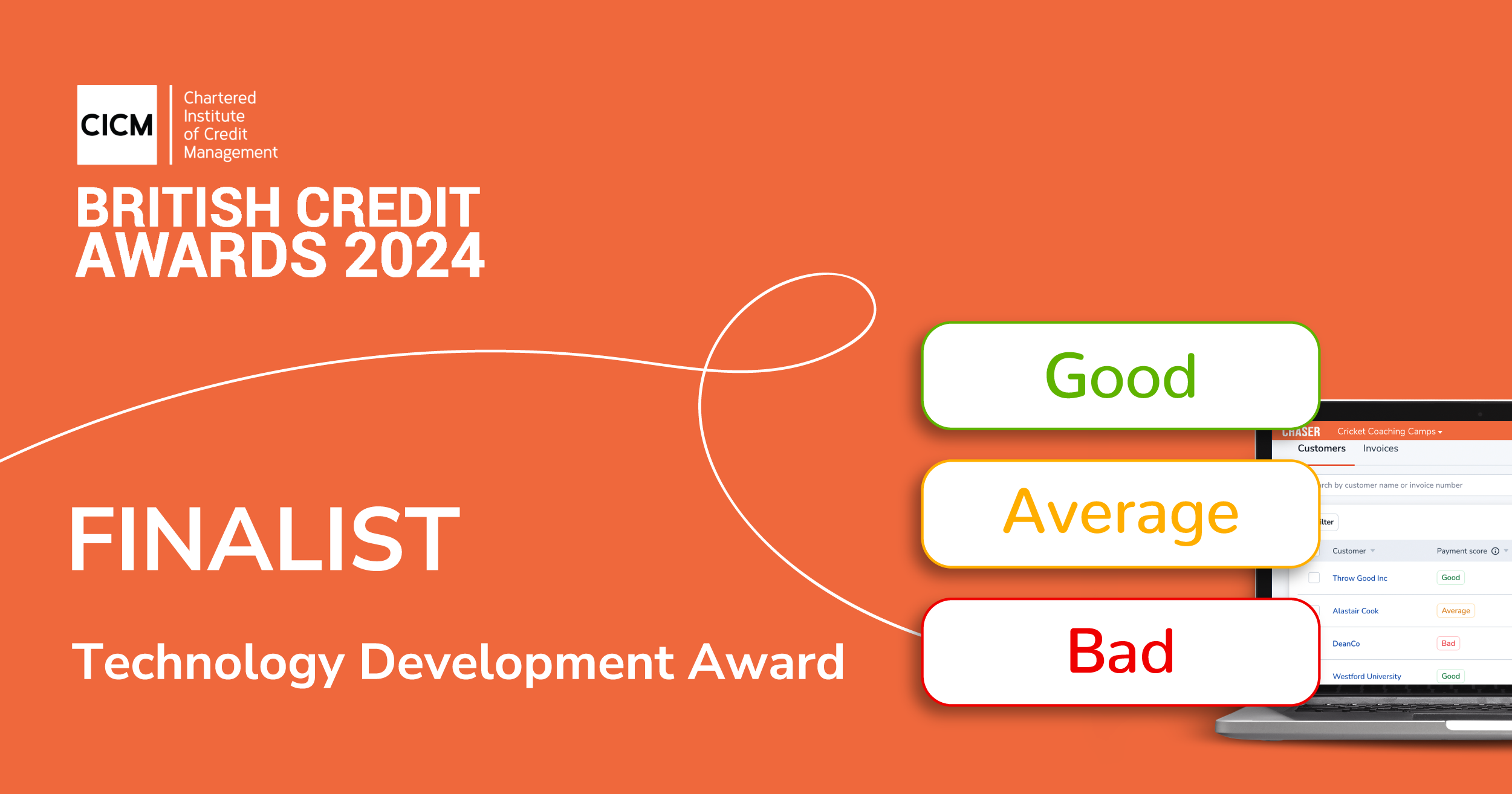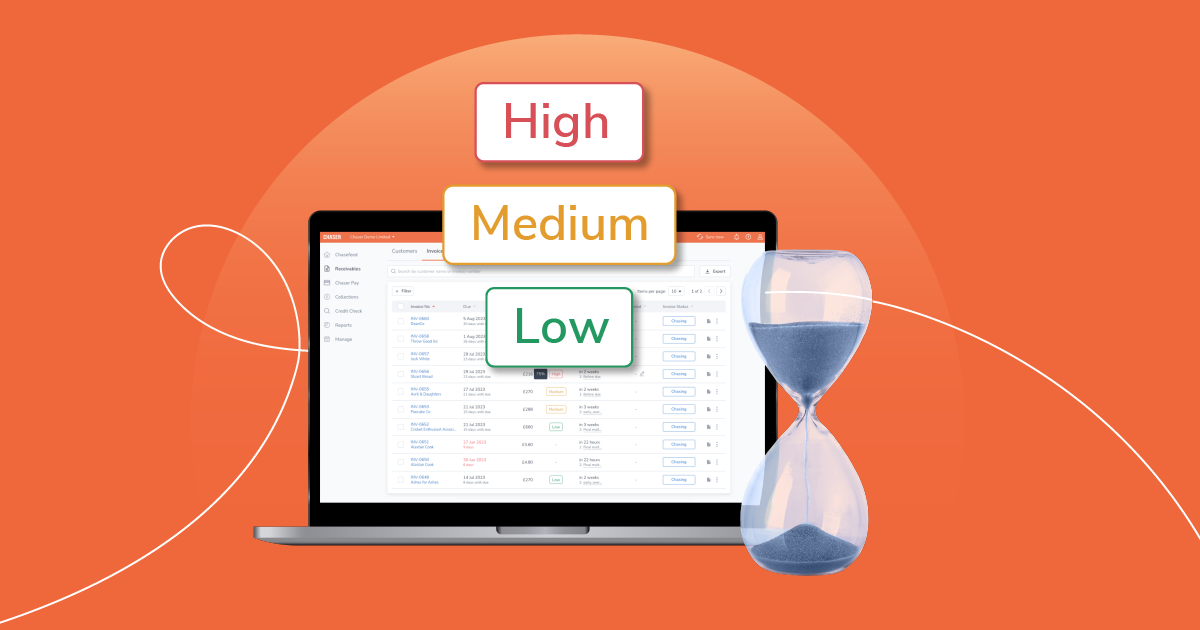1 in 7 companies takes more than 14 days to pay on time. In 2018, almost half of payments clients made to creative industry companies were late, according to fintech business lender MarketFinance. This left the industry over a billion pounds out of pocket.
Creative industries that offer film, TV and design services, as well as advertising and publishing, are more vulnerable to stoppages in cash flow because they’re often smaller companies.
Plus, these smaller firms are subject to longer payment terms, meaning that they often have to wait up to 90 days to receive payment.
Government measures such as the Prompt Payment Code and Duty To Report have helped create awareness around the issue. But they aren’t doing enough to fast-track payments.
"smaller firms are subject to longer payment terms, meaning that they often have to wait up to 90 days to receive payment."
The consequences late-paying clients have on agencies

Late business payments can interrupt cash flow so dramatically that it becomes impossible for organisations to invest in sales and scaling services. It can also make it harder for agencies to pay their bills, suppliers, and employees, which can hinder a company’s growth and lead to frustration. In many cases, late payments can hinder an agency’s ability to run its day-to-day operations and the ability to pay its operating expenses.
Ultimately, when payments are late, it can strain client relationships, which can further threaten cash flow. When a company terminates a contract early, this can bring the client’s chances of making a payment down from slim to none.
In extreme cases, businesses end up closing because they’re unable to carefully manage their limited cash flows.
How can creative agencies prevent late payments?
If you’re one of the agencies dealing with late-paying clients, there are practical and helpful actions you can take to prevent late payments in the future. Here are a few actionable ways to minimise late payments and ultimately have a more healthy cash flow.
Ask for deposits upfront
Consider implementing a policy that requires a 50% deposit upfront before any work begins. Also, be clear that you won’t deliver the work unless the client pays the other half.
You could even break down things further. For example, let’s say that you’re building and designing a website. You could ask for 50% upfront before you start. But you can also require another 25% when you create a tentative design. Once the client approves it, require them to make the extra payment.
Invoice on time
To increase the chances of your clients paying on time, make sure you’re invoicing them on time. If you’re late sending an invoice, it might send the message to a client that urgency and timeliness don’t matter to you.
Switch to a retainer-based model
If you’re billing by the project or by the hour, it might be helpful to switch to a retainer-based model. Using this method, your client will be paying the same amount every month for the set services that you offer.
When a client knows how much they’re paying, they’re more likely to set up recurring billing once a month. That way, their payments won’t be late because the money will automatically come out of their account. Automatic payments mean clients don’t have to look over a bill to make sure all their charges are correct.
Break large jobs into smaller payments
If you have an ongoing project that may last a few weeks to a few months, it’s best to divide payments across several dates. This helps you and your client manage cash flow.
Consider charging late fees
In your contract and billing policy, consider outlining extra fees as a consequence of late payments. Charging late fees can incentivize clients to make payments on time.
Also, be sure to do your research to find out how much you can charge by law. This varies from state to state.
Follow up
Use your accounting software to review your accounts receivable at least once a week. Then, develop a system for following up with payments starting when they’re 3 days late. Many creative agencies are now using credit control automation software, such as Chaser, to stay on top of their accounts receivables and send out payment reminders automatically. The personalised payment reminder emails sent from Chaser will come from your email address and have your personal signature so it looks like it's been hand-typed by yourself. This way, you can save time, get paid faster and still maintain important customer relationships.
Automate invoice chasing
Manually sending out payment reminders to your customers before, and after an invoice is due is both time-consuming and opens up for human errors especially as it can be difficult to manage multiple invoices and keep track of which customers paid and which ones didn’t. A credit control automation software will help streamline and optimise your accounts receivable process so that you can save time and get paid faster, all while minimising errors and ensuring that all unpaid invoices are followed up with.
What is automated invoice chasing?
Automated invoicing chasing streamlines and optimises your accounts receivable process by managing and automatically sending payment reminders to all clients with overdue invoices. Automated accounts receivable software will, in many cases, extract data from your accounting systems, ensuring that all data is correct and up to date. If you're using Chaser to optimise your A/R processes, you can also:
● Create payment plans for your customers and chase accordingly.
● Credit check potential clients directly in the software.
● Include a payment link l in all payment reminder emails to make it as easy as possible for customers to pay you.
5 key benefits to credit control automation software
Chasing unpaid invoices can be a tedious and time-consuming task, especially for large companies with numerous clients and invoices.
By automating their invoice chasing, organisations could see significant time savings, cost savings, cash flow improvements, and more.
Here are the top advantages of adopting an credit control automation software.
1. Reduce manual tasks and time
Chasing late payments and outstanding invoices is labour and time-intensive. According to a study by Xero, businesses in London, spend 1.5 full days per month just chasing overdue invoices.
In fact, the average UK SME is wasting 30 per cent of their time pursuing an average of five outstanding invoices at any given point.
By automating your credit control process you can say good-bye to spreadsheets and manual follow-ups as the system will take care of that for you. As a result, Chaser users are able to reduce their times spent chasing outstanding invoices but up to 15-hours per week by taking advantage of our innovative automated reminders.
2. Save money
By saving time, your organisation can also save more money. This can reduce various costs that come with invoice chasing.
For example, implementing a credit control automation software can reduce labour expenditures and costs associated with hiring a part or full time credit controller.
3. Improve cash flow

Optimising and improving accounts receivables processes is crucial for every businsess' cash flow.
Cash flow is the lifeblood of all creative agencies and the liquidity issues caused by late-paying customers can fatally interfere with that cash flow.
According to research done by Dun and Bradstreet, poor cash flow is the main reason for 9/10 SME liquidations. Without consistent cash flow, SMEs are unable to cover business expenses, pay their suppliers or even cover staff costs
Thus, ensuring that you get paid for your work and protect your cash flow should be a top priority for your business.
5. Get better visibility
By using an automated system, it becomes easier to track and stay on top of unpaid invoices. Regardless of how many invoices a business generates, an automated system can make it easier to check how many, and which invoices are overdue, ensure that all outstanding invoices are being chased and get an understanding of which clients you should keep an extra eye on.
6. Minimise errors
It’s difficult to avoid making errors when it comes to invoices and invoice chasing. There will always be that one client who got a new email address and didn't tell you, or moved office without informing anyone. But, by using an automated credit control software, you can minimise human errors that comes from working in spreadsheets and copying and pasting customer information. If you used a software such as Chaser, all customer and invoice data will be pulled directly from your accountancy software to ensure accurate invoice chasing.
Why Chaser for automated invoice chasing?
At Chaser, we help businesses get payments from clients sooner. How? Through automated invoice payment reminders using accounts an receivable software.
On average, our customers get paid 16+ days sooner and save 15+ hours per week on credit control.
When it comes to staying on top of your accounts receivables, companies, especially those in the creative industry, must adapt in order to prevent late payments from clients.
This means taking measures to protect the organisation such as requiring a deposit before starting work or setting up retainers.
However, those methods can only do so much to reduce late payments. For extra protection, companies can use credit control automation software to send out payment reminders, make it easier for customers to make payments, and streamline the invoice chasing process.
For more information about how automated invoicing software can help your bottom line, feel free to contact us or book a demo today.




